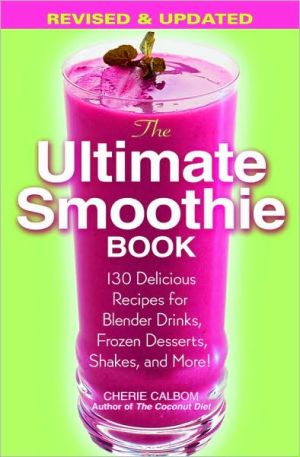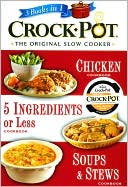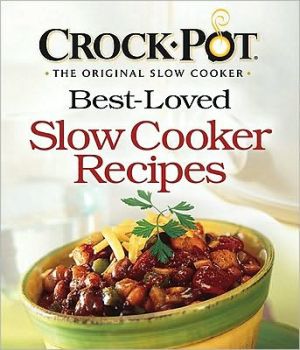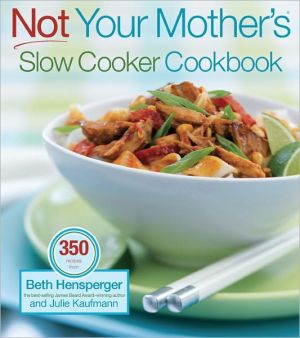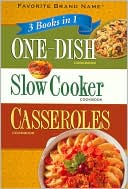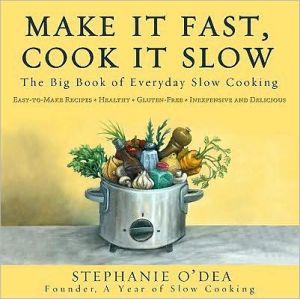The Ultimate Smoothie Book: 130 Delicious Recipes for Blender Drinks, Frozen Desserts, Shakes, and More!
Written by nutritionist and renowned author Cherie Calbom, this text shows readers how to make scrumptious smoothies that will make them feel great. It includes charts that analyse calorie, fat, protein, and vitamin content of the smoothies.
Search in google:
When the original Ultimate Smoothie Book was first published, smoothies were sweeping the country and becoming the hottest item on the menu everywhere from Baskin-Robbins to Jamba Juice. And why not? They're creamy, fruity, delicious, quick and easy to make, and most important--they're good for you! Now, THE ULTIMATE SMOOTHIE BOOK has been updated by nutritionist Cherie Calbom, aka "The Juice Lady", to include lots of delicious new smoothie recipes, as well as vital new information on: Carbohydrate reduction, with special low-carb smoothie recipes. The recently discovered health risks of soy--and suggested substitutions wherever soy is called for. Coconut oil, the latest diet and health phenomenon.Author Biography: CHERIE CALBOM lives in Edmonds, Washington.
The Ultimate Smoothie Book\ (Revised & Updated) 130 Delicious Recipes for Blender Drinks, Frozen Desserts, Shakes and More! \ \ By Cherie Calbom \ WARNER WELLNESS\ Copyright © 2006 Cherie Calbom\ All right reserved.\ ISBN: 0-446-69579-3 \ \ \ Chapter One\ Making Fresh Juice \ I use a lot of fresh juices in my smoothie recipes. You may think that's just because I'm known as the Juice Lady, but my love of fresh vegetable and fruit juices goes back many years before the Juice Lady was born. I turned my health around from continual illness and fatigue to the vibrant health I enjoy today because I changed my diet and started drinking an abundance of fresh vegetable juices flavored with a little low-sugar fruit juice. Though all of the recipes in this book can be made in a blender, I recommend using a juicer as well. If you don't own a juicer, I highly recommend that you invest in one. You'll be investing in your health and that of the people you love.\ Choosing the Right Juicer\ To get the most from juicing, it's very important that you get the right juicer; it can make the difference between juicing nearly every day and not juicing at all. It's important to distinguish between a blender and a juicer. You will use a blender for making smoothies. It liquefies or purees everything placed in it and does not separate pulp from juice. A juice machine, on the other hand, separates liquid frompulp. If you think you really don't need a juicer and that it might be a good idea to have carrot, celery, or beet pulp in your juice for extra fiber (some manufacturers tell you that you should), I can tell you from experience that those residues taste like juicy sawdust. For the best texture and flavor, I recommend you use a juicer. Look for these features:\ Choose a machine with adequate horsepower (hp). I recommend one with 0.5 hp. Weak machines with low horsepower ratings must run at extremely high revolutions per minute (rpm). A machine's rpm does not accurately reflect its ability to perform effectively because rpm is calculated when the juicer is running idle, not while it is juicing. When you feed produce into a low-power machine, the rpm will be reduced dramatically, sometimes stopping the juicer completely. I've "killed" a few juicers on the first carrot.\ Look for a machine that has electronic circuitry that sustains blade speed during juicing.\ Make sure the machine can juice tough, hard vegetables and fruits, such as pineapple skins, watermelon rinds, carrots, and beets, along with leafy greens such as parsley, lettuce, spinach, and herbs. Make sure it doesn't need a special citrus attachment.\ Look for a large feed tube so that you don't have to cut your produce into little pieces.\ A juicer that ejects pulp is best; it allows for continuous, nonstop juicing. Juicers that keep the pulp inside the machine require that it constantly be scooped out. Many of them have to be washed out before you can continue juicing.\ Choose a juicer that has only a few parts to clean and make sure you can clean them easily. The more parts a juicer has, and the more complicated the parts to wash, the longer it will take you to clean up and put the juicer back together. That makes it likely you won't use your machine very much. Also, choose a juicer that has a juice bowl that won't stain. Light plastic stains easily and it is hard to get the stains out.\ Tips for Juicing\ 1. Wash all produce before juicing; fruit and vegetable washes are available from many grocers and health food stores. Cut away all moldy, bruised, or damaged areas before juicing.\ 2. Use organic or unsprayed (transitional) produce whenever possible to ensure that you have the purest juices.\ 3. Because the skins of oranges, tangerines, and grapefruits contain indigestible, volatile oils that can cause digestive problems and taste bitter, always peel these citrus fruits before juicing. (Lemon and lime peels can be juiced if organic.) You should leave as much of the white pithy part on the citrus fruit as possible, since it contains the most vitamin C and bioflavonoids (phytonutrients with antioxidant activity). Always peel mangoes and papayas, since their skins contain an irritant that is harmful when eaten in quantity. Also, I recommend that you peel all produce that is not labeled organic, even though the largest concentration of nutrients is in and next to the skin; the peels and skins of sprayed fruits and vegetables have the largest concentration of pesticides.\ 4. Remove pits, stones, and hard seeds from fruits such as peaches, plums, apricots, cherries, and mangoes. Softer seeds from oranges, lemons, watermelon, cantaloupe, grapes, and apples can be juiced without a problem. Because of their trace-element composition, large quantities of apple seeds should not be juiced for young children; they should be okay for most adults.\ 5. The stems and leaves of most produce, such as beet stems and leaves, strawberry caps, and small grape stems can be included in the juicing process; they offer nutrients as well. Larger grape stems should be discarded, as they can dull the juicer blade. Carrot and rhubarb greens should be removed because they contain toxic substances.\ 6. Most fruits and vegetables have a high water content, which makes them ideal for juicing. Those with much less water, such as bananas, mangoes, papayas, and avocados, will not juice well. They can be used in smoothies and cold soups by combining them in a blender with fresh juice or milk of choice.\ 7. Most fruits and vegetables should be cut into sections or strips that will fit your juicer's feed tube.\ 8. Juice can be stored in an airtight, opaque container in the refrigerator or a thermos for up to twenty-four hours; light, heat, and air will destroy nutrients quickly. Melon and cabbage juices do not store well. Be aware that the longer juice sits before you drink it, the more nutrients it loses. If juice turns brown, it has oxidized and lost a large amount of its food value. After twenty-four to forty-eight hours, it may become spoiled.\ 9. Place a plastic bag-the kind that you find free in the produce section of a grocery store-in the pulp receptacle of your juicer. When you are done juicing, you can toss the pulp or use it in cooking or composting, but you won't need to wash the receptacle.\ Organically Grown Ingredients\ Organic foods are those grown without pesticides or chemical fertilizers. Nonorganic foods, often referred to as "commercial," are grown with a variety of toxic chemicals, many of which are known to be or suspected of being carcinogenic and which damage the environment.\ Choosing organically grown produce whenever possible is also good for the taste buds. Many famous chefs across America think so and are opting for organic food when it is available. But the primary reason for choosing organic foods, even when they cost a few pennies more, is for their health benefits. First, and foremost, pesticides are not good for anyone's body- they can pose long-term health risks like cancer and birth defects as well as immediate health concerns such as acute intoxication, with symptoms that include vomiting, diarrhea, blurred vision, tremors, convulsions, and nerve damage.\ But is organically grown food more nutritious? That is the question that's been posed by critics for years. Intrigued by the claims that organics are better, researchers at Rutgers University decided to look for some answers. They compared the mineral content of commercially grown produce with that of organically grown. The results were astounding! Commercially grown spinach had only 3 percent as much ironas organically grown spinach and less than 1 percent of the manganese. Commercial cabbage had 70 percent less calcium than its organic counterpart. Organically grown lettuce had 70 percent more potassium than commercial lettuce. Tomatoes grown commercially had only 8 percent as much magnesium as the organic tomatoes, and snap beans had only 3 percent as much manganese as the organic beans.\ Organic produce is richer in nutrients as a result of the practice of composting and crop rotation utilized by most organic farmers. Composting is necessary when chemical fertilizers are not used, and composts replenish the soil with minerals. For your health's sake, I encourage you to choose organically grown produce whenever possible. When it is not available, ask your grocer to carry it for you. The more requests made for organically grown food, the more available it will be, and the less it will cost.\ When choosing organically grown food, look for labels marked "certified organic." Such labels mean that the produce has been cultivated according to uniform standards that are verified by independent state or private organizations. Certification includes inspection of farms and processing facilities, record keeping, and testing of soil and water for pesticides-all to ensure that growers have met government standards. If you see a label that says "transitional" or "transitional organic," this means the food was grown on a farm that recently converted, or is in the process of converting, from chemical to organic farming.\ A recent landmark lawsuit against the FDA revealed internal reports showing bioengineered foods not to be completely safe. Foods produced through recombinant DNA technology entail a unique set of risks over that of their conventionally produced counterparts, such as toxins and allergens. It is advisable to avoid bioengineered foods.\ Also, avoid irradiated food. Producers use gammaray radiation to kill pests and germs in stored food, and to increase the food's shelf life. But eating irradiated food is not something that can promote health. The average doses of radiation used to decontaminate most foods can be up to 5 million times that of a typical chest x-ray. This practice destroys vitamins and minerals. It also generates harmful byproducts such as free radicals, toxins that can damage cells, and harmful chemicals known as radiolytic products that include formaldehyde and benzene.\ (Continues...)\ \ \ \ \ Excerpted from The Ultimate Smoothie Book by Cherie Calbom Copyright © 2006 by Cherie Calbom. Excerpted by permission.\ All rights reserved. No part of this excerpt may be reproduced or reprinted without permission in writing from the publisher.\ Excerpts are provided by Dial-A-Book Inc. solely for the personal use of visitors to this web site. \ \
